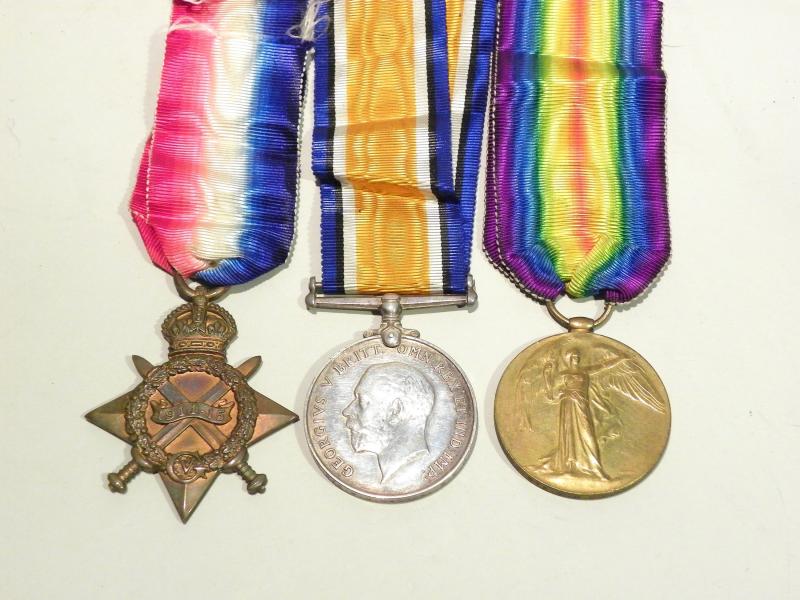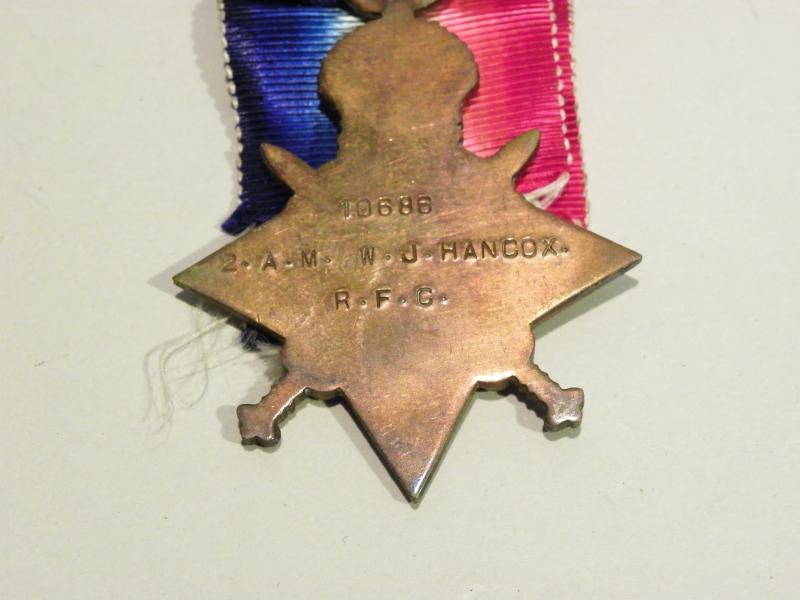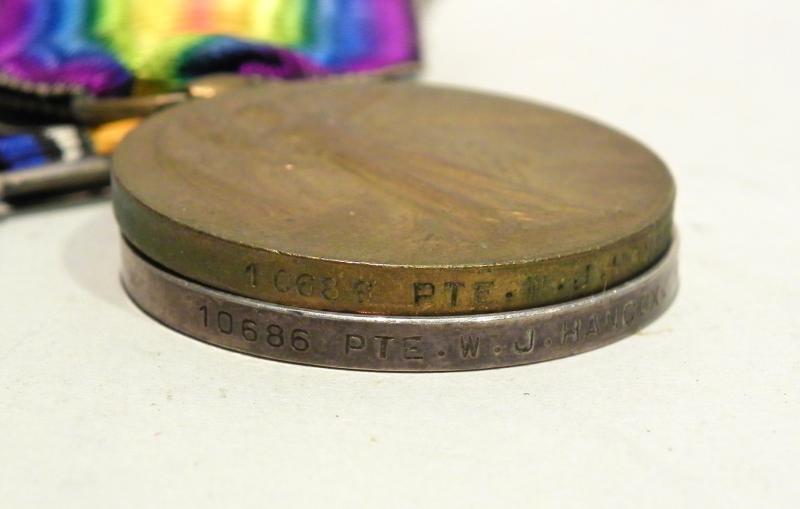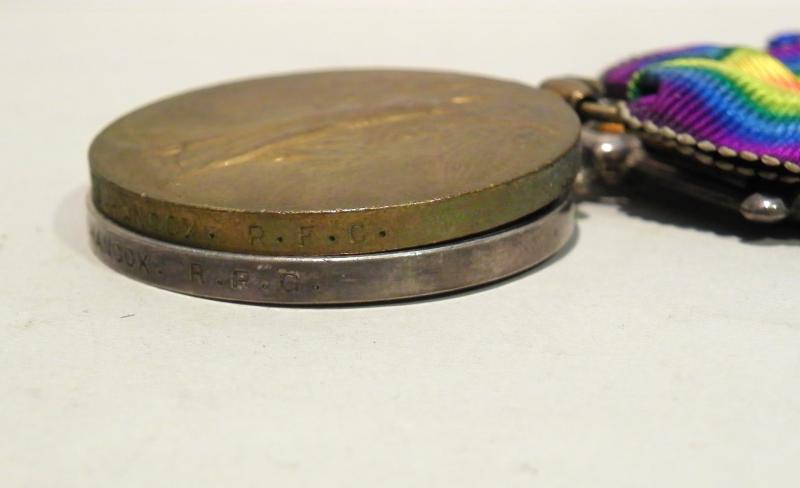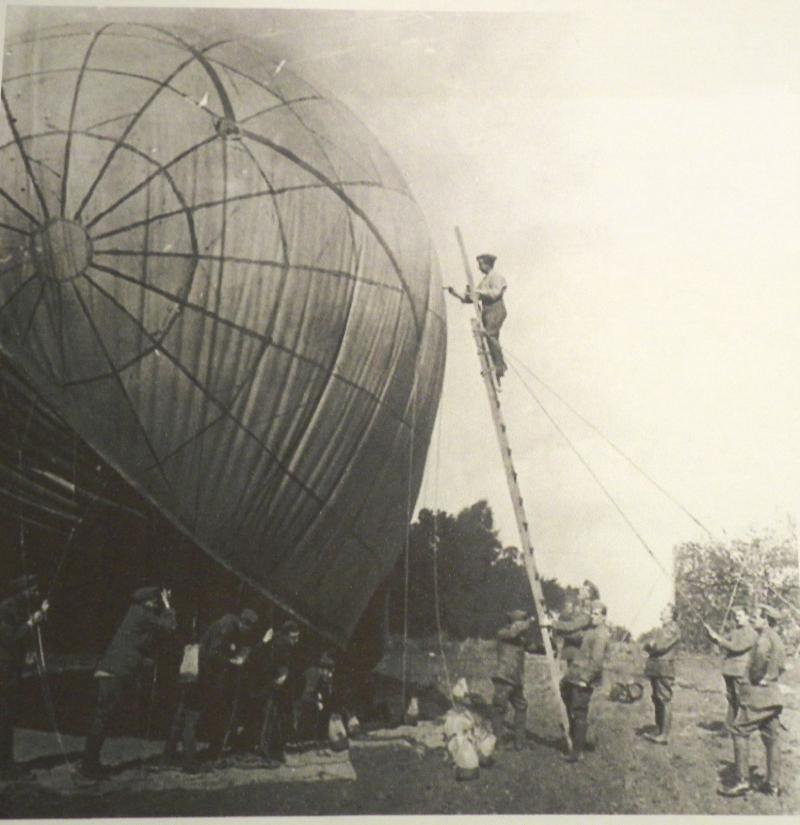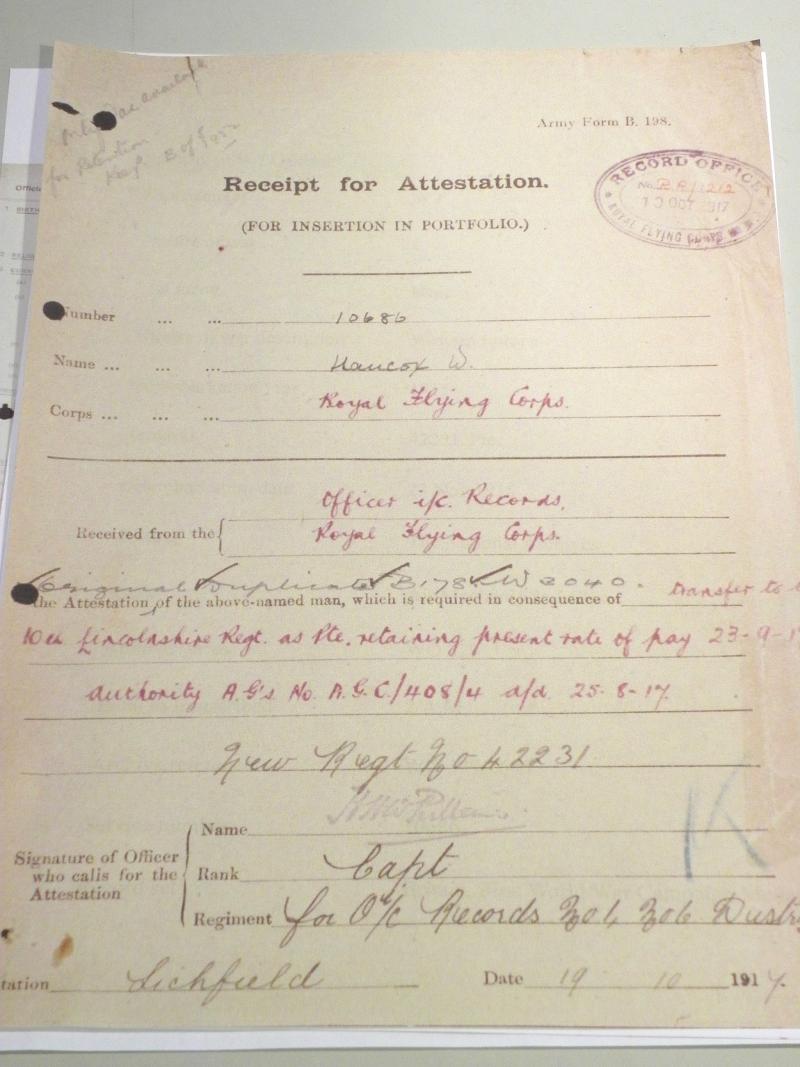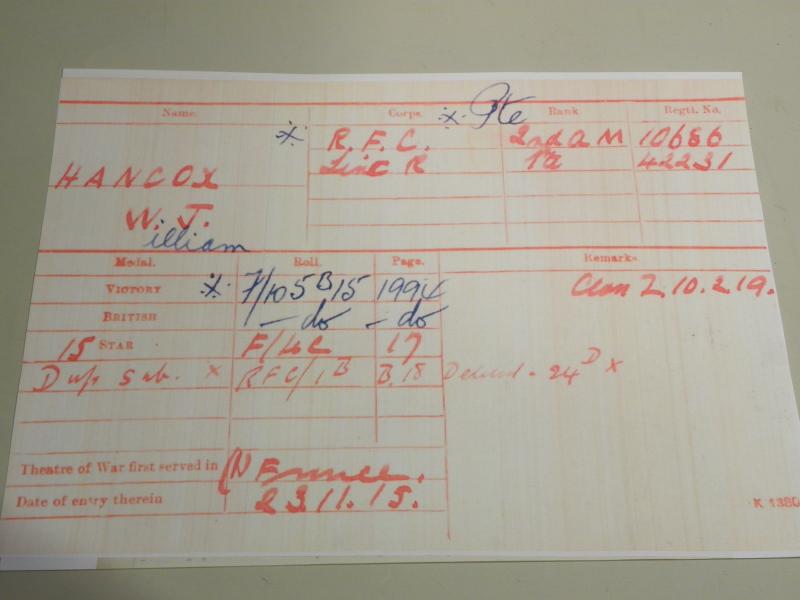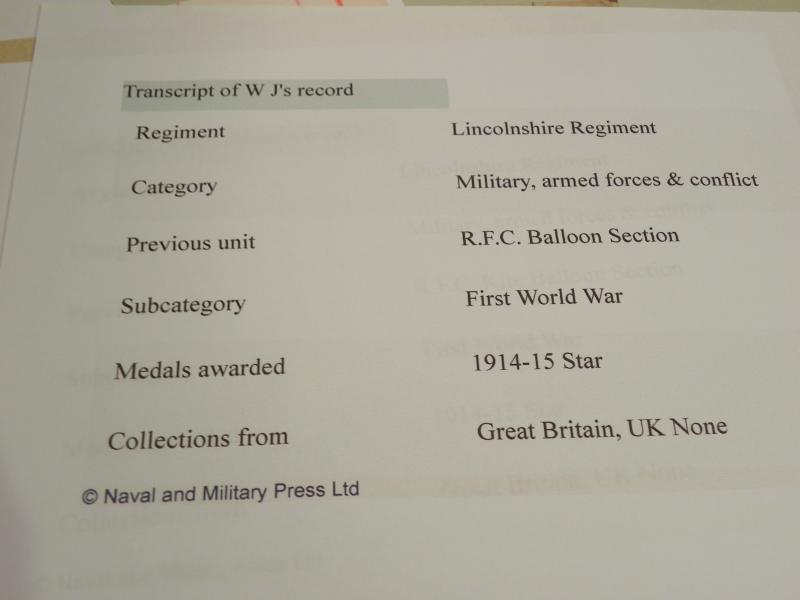WW1 1914/15 Star Trio to Hancox Royal Flying Corps & Grimsby Chums.
An interesting 1914/15 star, British war and victory medal all correctly named to 10686 2nd AM – Private William J Hancox Royal Flying Corps. William Hancox served in France with the RFC Kite Balloon section from 23rd November 1915 as an Air Mechanic 2nd class, having probably first serving a year in the UK. A RFC AM2 was roughly a rank of Private but of the technical branch and could hold one or several positions as, Armourer, Acetylene Welder, Blacksmith, Coppersmith, Tinsmith, Engine Fitter, Gear Mechanic, Aircraft Rigger, Electrician, Magneto-Repairer, Fitter, Machinist, Sailmaker etc.
Each RFC Brigade had a Kite Balloon Wing commanded by a Lieutenant Colonel. Within each wing was a number (typically five) Kite Balloon Companies – these being commanded by a Captain or Major. Each Company would have two or three Kite Balloon Sections. The First World War kite balloons were fabric envelopes filled with hydrogen gas. Kite balloons were controlled by a cable attached to the ground and first used on the Western Front on 8 May 1915 in the Aubers Ridge area.
Each balloon was maintained and tethered by a team of 48 highly-trained men, carried two passengers, a commander and an observer, who, via a telegraph wire down to the ground would send back information on troop formations and artillery locations. Each basket was equipped with telecommunication equipment, binoculars, a long-range camera, maps, sandbags, pressure gauge, code book, a barometer, an air speed indicator, two sheath knives, two life savers and two parachutes. William having the rank of AM2 would have had technical skills to maintain the balloon but also would have served as ground crew when the balloon was being used.
On 23rd September 1917 William was transferred to the 10th Battalion the Lincolnshire regiment (the Grimsby Chums) part of the 34th Division. Probably due to the extremely heavy losses at the Somme in 1916. From here he would have seen action at 3rd battle of Ypres in October that year, especially Battle of Passchendaele and the attack between the Watervlietbeek and Broenbeek streams on the 22nd of October. In 1918 he went on to see action at the Battle of St Quentin and the battles at Lys, where they saw heavy casualties. After suffering such a great loss in number, the 34th Division was reorganised and took a period of rest and retraining before the 10th Lincs were transferred to the 39th Division from around June 1918 and was engaged in supervising courses of instruction for American troops, beginning with units of the 77th American Division.
William Survived the war and was finally demobilised on the 10th of February 1919.
His medals are in excellent original condition and all three are unusually named to Royal Flying Corps. They come with some copy research including Medal index card, RFC transfer papers and other information confirming the above.
Code: 29591

